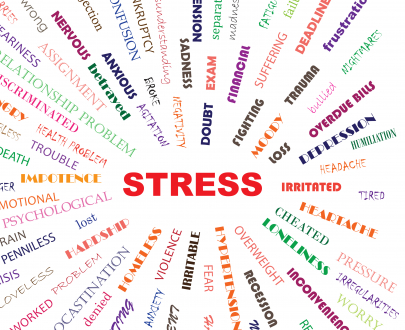 Stress is not only normal, it is essential! Stress keeps us alive by being the spark in human nature’s fight or flight response. For example, if you are taking part in a sporting event or giving a speech, a little stress will give you the extra energy you need to perform. But, too much stress or stress over a long time is bad news for children and youth. Someone who is often in a fight or flight mode forces their body to mobilize too much energy and release hormones called adrenaline and cortisol that in excess can (over time) damage the brain.
Stress is not only normal, it is essential! Stress keeps us alive by being the spark in human nature’s fight or flight response. For example, if you are taking part in a sporting event or giving a speech, a little stress will give you the extra energy you need to perform. But, too much stress or stress over a long time is bad news for children and youth. Someone who is often in a fight or flight mode forces their body to mobilize too much energy and release hormones called adrenaline and cortisol that in excess can (over time) damage the brain.
When you, or a child you care about needs a stress intervention, follow these recommendations of Dr. Sonia Lupien, the director of the Center for Studies on Human Stress[1] in Montreal and follow the links for more information and tools.
-
Know the Signs
The more you are aware of both the physical and emotional signs of stress, the more quickly you can intervene. Stress can manifest in different ways. If any of the following show up, you might want to take a closer look:
-
Problems sleeping (this may indicate worry)
-
Changes in behaviour (for example a calm child who becomes agitated and vice-versa)
-
Very strong emotional outbursts
-
Difficulty with learning and memory (when a child is stressed they have a hard time focusing and distinguishing between what is relevant and not relevant)
-
Hyperactive behaviours (think fight and flight!)
-
Frequent colds and flus (this may be a sign of a low immune system)
-
Changes is hunger, appetite and digestion
-
Muscle tension and headaches
-
Harness the Power of Others
-
Gather a circle of support
-
Connect with animals
-
Plan activities to support the child to do things for others
-
-
Problem Solve
-
Name the feelings - Name it to tame it![5]
-
Identify the trigger in the situation - using N.U.T.S.[6]
-
Emphasize ways that the child can increase their feeling of control
-
Access blogs and research articles about the different effects of stress in our lives (for parents, at work, with youth) at the Center for Studies on Human Stress.
From the Fun FRIENDS For Life Parent Program, watch the video showing a parent helping her child think about the people in his life who look out for him and to whom he feels connected to. In Fun FRIENDS (for 4-7 year olds), this web of caring people (or pets) is called the child’s “Circle of Support”. The concept can be adapted to any age.
The results from a meta-analysis supports the long-held impression that animals can influence medical well-being (including stress reduction), and behavioral outcomes as well as reducing Autism spectrum symptoms.
When helping behaviour is not experienced as an overwhelming or forced task, there is a positive link between altruism and improved mental and physical health and happiness.
Watch Author and Psychiatrist Dr. Dan Siegel demonstrate two simple steps to calm a child who is experiencing intense emotions.
Scientific research has shown that for a situation to be stressful it must contain one or more "N.U.T.S."
Sample some ideas to introduce and practice calm breathing with children in your life.
Written by Susan Hallam of the University of London, The power of music: Its impact on the intellectual, social and personal development of children and young people, reviews the emperical evidence related to the effects of an active engagement in music. The review specifically examines the following areas:
- language development
- literacy and numeracy
- intellectual development
- academic achievement
- creativity
- social and personal development
- physical development, health and well-being